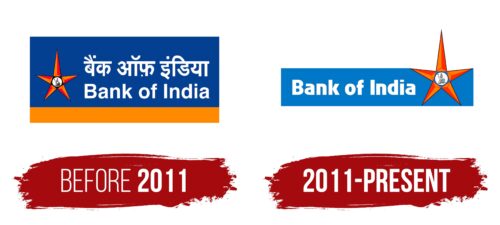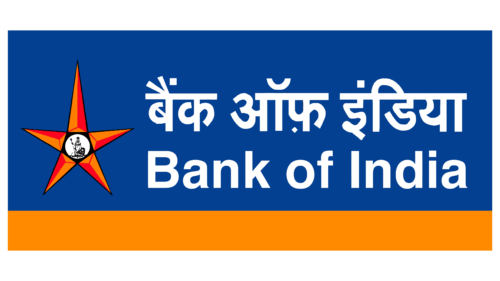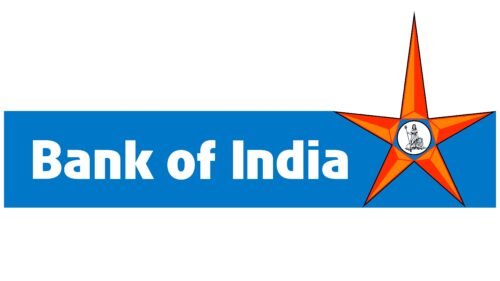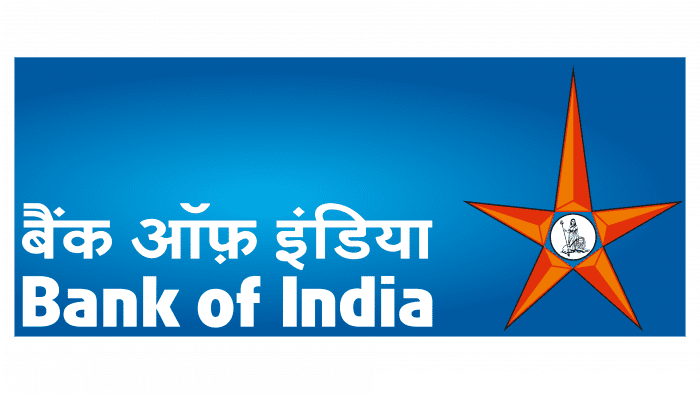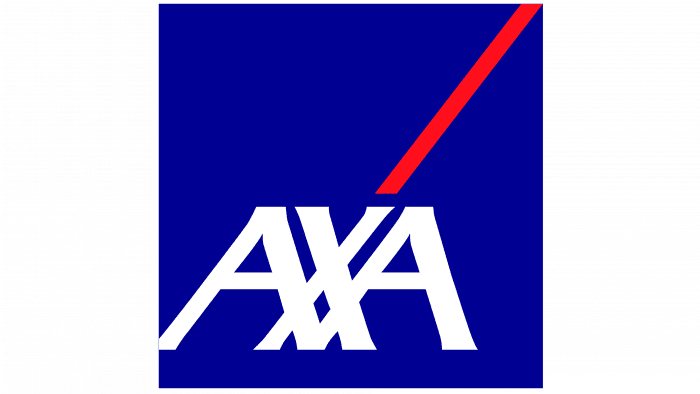The Bank of India logo demonstrates the Indian roots of the organization. The mystical motifs of the image suggest special protection from higher powers. The symbols convey the presence of branches and the spread of the organization’s network throughout the country and beyond.
Bank of India: Brand overview
Bank of India is a major commercial bank and a member of the popular Society for Worldwide Interbank Financial Telecommunication (SWIFT). Founded in 1906, it has opened more than 5300 branches to date, 56 of which are located outside the country. The financial institution has also established five subsidiaries and one joint venture. Additionally, it has five offices. Its headquarters are currently located in the Bandra-Kurla Complex, Mumbai, India.
BOI (its abbreviated second name) emerged as a counterbalance to financial institutions from Europe and America. In the previously colonized country, no one was representing the interests of the native population in the banking sector. Then, in September 1906, a group of influential local businessmen united and created their own bank. It was one of the first private structures of its kind. The significant event took place in the city of Mumbai (state of Maharashtra).
The head of the Bank of India became Sassoon J. David – a legendary figure, a shrewd merchant, the first baronet, a textile factory owner, and a member of the Baghdadi Jewish community of Bombay. He led the institution from its foundation until 1926 – until the last years of his life.
In the 1950s, the bank intensified efforts to open foreign branches. The first branches were opened in Japan, Singapore, Uganda, Kenya, and Yemen. After a short break, it began to explore foreign markets again. In 1969, along with thirteen other banks, it was nationalized and came under state control.
Meaning and History
Throughout this time, the financial institution uses the emblem approved at the beginning of its career. It has always accompanied financial operations, represented the company internationally, and brought luck, as it initially had a sacred meaning.
What is the Bank of India?
Bank of India is a national commercial bank owned by the Government of India and the Ministry of Finance. It was founded in 1906 by David Sassoon & Co. In 1969, it was transformed into a national bank. Currently, BOI has over 3,500 branches. The bank’s headquarters are located in Mumbai.
before 2011
The Bank of India logo consists of many elements. Its base is a large blue rectangle, under which runs a wide orange band of the same length. The name of the financial institution is written in two languages: Indian and English. In the first line are white symbols, and in the second – Latin letters are of the same color. A bold, grotesque font is used for them.
To the left is a large five-pointed star. Its triangular orange rays seem voluminous due to the combination of different colors. In the center of the star is a black pentagon with a white circle. It depicts a girl holding a trident and leaning on a lying lion. Possibly, this is a reference to the goddess Durga from ancient Indian mythology. She is a symbol of strength, power, and victory over evil. The lion, in turn, personifies strength and resilience.
2011 – today
The symbolism of the Bank of India (BOI) logo includes several elements, each with its own symbolism.
The orange color of the star may symbolize energy, warmth, optimism, and determination, as well as indicate the bank’s attractiveness and dynamism.
The pentagon in the center of the star symbolizes stability, protection, and security and may also indicate the innovations and development that the bank strives to provide its clients. The blue color of the pentagon in the center of the star and the background under the bank’s name are associated with peace, reliability, and calmness.
The image of the girl with the trident and lion has symbolic significance. In Indian mythology, the trident symbolizes wisdom and knowledge and may indicate divine power and authority. The lion is often associated with strength, courage, and protection. The overall image may indicate the bank’s ability to protect and manage financial resources and its pursuit of wisdom and innovation.
The combination of orange and blue colors may indicate the bank’s attractiveness. The image of the girl with the trident and lion emphasizes its pursuit of wisdom and protection.
Bank of India: Interesting Facts
The Bank of India (BOI) is a old and respected bank in India, and it’s been around for more than 100 years.
- How It Started: On September 7, 1906, some smart business people in Mumbai decided to start the Bank of India. It was special because it was the first bank in India run by Indians, helping India start to handle its own money instead of Britain.
- Going Global: In 1946, the Bank of India opened a branch in London, which was a big deal because it was the first time an Indian bank set up shop outside India. This helped India do business with countries in Europe after World War II.
- Becoming a Part of the Government: In 1969, the Indian government took over the Bank of India and 13 other big banks. This was done to gain more control over banking, help the country’s economy grow, and help more people.
- Tech-Savvy: The Bank of India was one of the first banks in India to use computers to help run things better and faster, making things easier for their customers.
- The Star Logo: The bank’s logo is a star chosen because stars used to be on money during British times. They stand for guidance and trustworthiness.
- Big Network: The Bank of India has over 5,000 places to bank in India and 60 offices in 22 countries. This big network means it can help many different people and businesses worldwide.
- New Services: This bank was the first to start special services in India, like home loans, personal needs, and education, helping people with different needs.
- Helping the Countryside: The Bank of India has many branches in rural areas and works on programs to ensure everyone, even people living in far-off places, can use banking services.
- Awards: The bank has won many awards for its innovative use of technology, efforts to include more people in banking and commitment to its customers.
- Historical Office: The main office in Mumbai is in a old and important building known by many people in the city. It shows how long the bank has been in existence and its story.
The Bank of India’s story is about starting from one place in Mumbai and growing big worldwide. It’s about always finding new ways to help its customers and ensuring it keeps up with technology and helps as many people as possible.
Font and colors
The logo has the form of a horizontally elongated rectangle with the bank’s symbol on the left and its graphic symbol on the right. The text consists of the name. It is written in clear and legible letters with optimal spacing. Standard grammatical rules are observed: the first letter in the word is capitalized, and the rest are lowercase. The exception is prepositions, which contain only lowercase letters.
To the right is a five-pointed star with unevenly elongated sharp rays: four of them are equally short, and one is maximally long. Shadows give them a three-dimensional volume, making it seem that one side of the face is light and the other dark.
In the center, on a white background, is a classic deity – a representative of the Hindu pantheon with a trident in hand. Beside it looms a lion impressively. The confident posture of both indicates that they are guardians protecting the financial structure from any misfortune and trouble. The circle is inscribed in an inverted pentagon and then in another, but larger and correctly positioned.
The logo is written in a smooth, grotesque font from the Sans Serif family. It has its own differences: the letters “a” and “n” have identical slopes of the right legs – slightly slanted, smooth, maximally even, without transitions. The lowercase letter “i” has a tiny rectangle instead of a dot, which does not extend beyond the rest of the symbol.
The corporate palette includes three color options, each present in the emblem. Specifically, these are Raspberry vermilion (#F33F26), mandarin Princeton Orange (#FA7F22), and Ocean Blue Boat Blue (#017DC7). White color is also present: it is used for inscriptions and the background for the central figures of the star.
Bank of India color codes
| Neon Red | Hex color: | #f33f26 |
|---|---|---|
| RGB: | 243 63 38 | |
| CMYK: | 0 74 84 5 | |
| Pantone: | PMS Bright Red C |
| Safety Orange | Hex color: | #fa7f22 |
|---|---|---|
| RGB: | 250 127 34 | |
| CMYK: | 0 49 86 2 | |
| Pantone: | PMS 151 C |
| Star Command Blue | Hex color: | #017dc7 |
|---|---|---|
| RGB: | 1 125 199 | |
| CMYK: | 99 37 0 22 | |
| Pantone: | PMS 3005 C |
| Black | Hex color: | #000000 |
|---|---|---|
| RGB: | 0 0 0 | |
| CMYK: | 0 0 0 100 | |
| Pantone: | PMS Process Black C |
FAQ
What does the Bank of India logo mean?
The logo of this bank signifies strength and protection. This is hinted at by the figures of the lion and the Indian religious pantheon with a trident in hand.
What does the Bank of India logo represent?
The Bank of India logo features a five-pointed star with an elongated upper ray. In the center is a Hindu deity holding a trident, and next to it lies a lion. To the left is the name in two languages: English and Indian. A horizontal blue rectangle is used as the background.
What font is used in the Bank of India logo?
The inscriptions in the Bank of India logo are done in a bold sans-serif font. The grotesque letters have a slightly rounded shape: one part is straight, and the other is curved. The exceptions are the letters “k” and “i,” both of which are straight.

